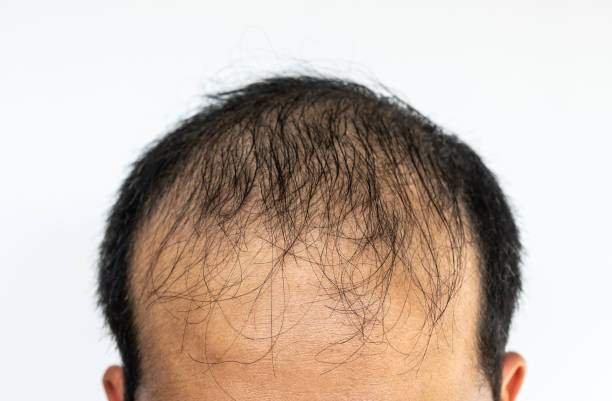Best Hair Transplant in India | Monaris Hair Clinic | New Delhi & Indore
Male Pattern Baldness
Book Appointment
Monaris Hair Clinic
Male Pattern Baldness at Monaris

Monaris Hair Clinic
Male Pattern Baldness at Monaris
Male pattern baldness is a frequent type of hair loss that affects almost all males at some point in their lives. Androgenetic alopecia is a term used to describe the disorder. Baldness normally takes 15 to 25 years to develop, but it can happen sooner. Typically, hair on the sides begins to thin (recede) at first (temples). At the same time, the hair on the top of the head normally thins out. A bald patch appears in the center of the head over time. The receding sides and the bald patch on top (the crown) grow and fuse together over time, leaving a patch in the front. The patch in the front thins out as well. Around the back and sides of the head, a rim of hair is frequently left. This rim of hair thins and falls off in some males, leaving a completely bald scalp. It is mostly genetic but can progress rapidly due to multiple factors.
Monaris Hair Clinic
What causes male pattern baldness?
In addition to genetic predispositions, hormonal imbalances, and age-related factors contributing to early hair loss, lifestyle elements such as stress can play a significant role in exacerbating the condition. Heightened stress levels contribute to hormonal disruptions, particularly an increase in cortisol, which, in turn, can impact the hair growth cycle. For individuals genetically predisposed to male pattern baldness, the hormone dihydrotestosterone (DHT) plays a crucial role. DHT disrupts the normal growth cycle of hair, weakening and shrinking hair follicles, ultimately leading to a cessation of the growth process. Similarly, women may also experience female pattern baldness, often associated with hormonal issues, resulting in noticeable hair loss, particularly at the frontal region of the scalp. Understanding these multifaceted factors is crucial in addressing and managing early hair loss concerns among the younger demographic.


Monaris Hair Clinic
What are the symptoms of male pattern baldness?
Male pattern baldness, or androgenetic alopecia, follows a predictable pattern of hair loss. Common signs include gradual hair thinning, starting at the temples and crown. Receding hairline forms an ‘M’ shape, and thinning at the crown becomes more visible. Affected hair follicles produce shorter, finer, and less pigmented hair, contributing to the appearance of thinning. As hair loss progresses, it can create a ‘U’ shape around the sides of the head.
Grades of Male Pattern Baldness
What are the reasons for the lack of Beard and Moustache hair?
A lack of moustache and beard hair can be caused by a variety of factors. The variables that limit hair growth in the moustache and beard region are listed below
Medications
Male pattern baldness can be treated at an early stage by using certain medications prescribed by the doctor. These medications should only be used as directed by physicians. Self-medication can cause ill effects.
Hair transplants
Hair transplants are one of the most effective and sought-after techniques adopted so far. It involves the placement of hair follicles from different parts of the body into the bald region. It is a very popular technique and a long-term remedy for male pattern baldness.
GFC and PRP hair loss treatments
Depending on the extent of thinning and pattern of hair loss dermatologist at Monaris Hair Clinic can advise you if these treatments can help you. Proper evaluation and staging of your hair loss is necessary to get the right hair loss treatment.
Other techniques
There are several other techniques like laser therapy, Derma-roller, mesotherapy, etc, and more that have also been used for getting fuller hair back.
